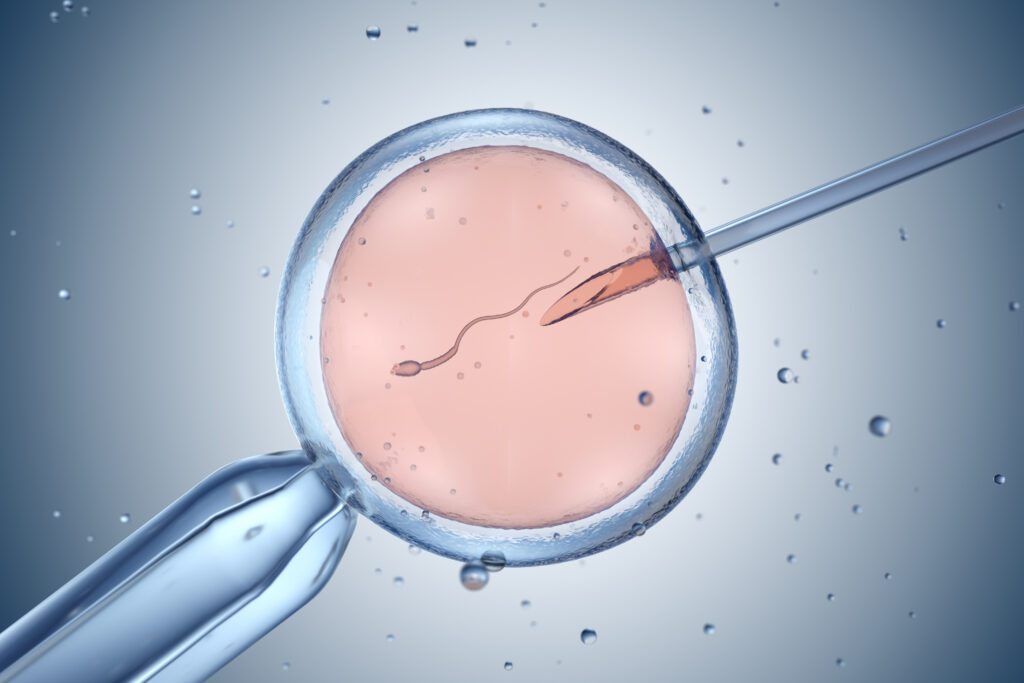Legislative and Litigation Overview of 20-Week Abortion Laws

This is Issue 66 of the On Point Series.
Originally published August 2021, and has last been updated on September 10, 2021.
This paper sets out legislative and litigation information involving state laws that prohibit abortion at 20 weeks of pregnancy.
Summary
Since January 2010, twenty-three states have enacted statutes prohibiting abortion at 20 weeks of pregnancy. All but one of these laws make at least some explicit reference to fetal pain in either the legislative title, legislative findings, statement of legislative purpose or intent, or some combination of these elements. Evidence shows that unborn children can feel pain by 20 weeks, or five months, of pregnancy and even earlier.
Six of these 23 twenty-week laws measure 20 weeks of pregnancy using the gestational method which counts from the first day of the woman’s last menstrual period. The remaining 17 laws measure the duration of pregnancy from the point of fertilization.
Of the 23 twenty-week laws enacted since 2010, only six have faced challenge in court, four have been enjoined, with one pending request for injunction in Montana, and 18 currently in effect. The 20-week laws in Arizona and Idaho have been enjoined by the federal Ninth Circuit appeals court. The Tennessee 20-week law, which is part of a comprehensive bill, has been enjoined but is currently pending before the Sixth Circuit. An additional challenge, a state court challenge in Georgia asserting only state law claims, has failed.
Three additional states—Delaware in 1969, North Carolina in 1973 (amended in 2015 with stronger protections), and Utah in 1991—enacted 20-week abortion bans well before 2010. We have uncovered no evidence suggesting that any of these three laws depended in any way on the issue of fetal pain. None of these three laws are currently in effect.
Legislative Overview of 20-Week Laws Enacted Since 2010
In this section we set out legislative information regarding 23 state laws that prohibit abortion at 20 weeks of pregnancy.
Alabama
- State: Alabama
- Title: Alabama Pain-Capable Unborn Child Protection Act
- Date: Jun 15, 2011
- Veto Override: No
- Year: 2011
- Bill: Ala. H18 (2011)
- Session Law: Ala. Code § 26-23B-1
- Act: Ala. Act No. 2011-672
- Method of Measurement: Post-fertilization Age
- Legislative Finding(s) re Pain: Yes
- Describe Extent of Findings: The findings are extensive and are in 11 separate provisions that describe the neurological development of unborn children as well as the physiological consequences of painful stimuli. The findings mention the routine use of anesthesia on unborn children during in-utero surgeries.
- Described as Findings?: Yes
- Legislative Purpose Statement re Pain: Yes. “It is the purpose of this state to assert a compelling state interest in protecting the lives of unborn children from the stage at which substantial medical evidence indicates that they are capable of feeling pain.”
- Status: In effect
- Online resources:
- Code: http://alisondb.legislature.state.al.us/alison/codeofalabama/1975/coatoc.htm (click on Title 26 then scroll to Chapter 23B)
- Bill: http://arc-sos.state.al.us/cgi/actdetail.mbr/detail?year=2011&act=%20672&page=bill
- Act: http://arc-sos.state.al.us/PAC/SOSACPDF.001/A0008964.PDF
Arizona
- State: Arizona
- Title: n/a
- Date: April 12, 2012
- Veto Override: No
- Year: 2012
- Bill: Ariz. H.B. 2036 (2012)
- Session Law: Ariz. Sess. Laws Ch. 250 (2012)
- Act: A. R. S. § 36-2159, AZ ST § 36-2159
- Method of Measurement: Gestational Age
- Legislative Finding(s) re Pain: Yes
- Describe Extent of Findings: The sole finding states, “There is substantial and well-documented medical evidence that an unborn child by at least twenty weeks of gestation has the capacity to feel pain during an abortion.”
- Described as Findings?: Yes
- Legislative Purpose Statement re Pain: Yes. “For these reasons, the legislature’s purposes in promulgating this act include to . . . Prohibit abortions at or after twenty weeks of gestation, except in cases of a medical emergency, based on the documented risks to women’s health and the strong medical evidence that unborn children feel pain during an abortion at that gestational age.”
- Status: Enjoined by Isaacson v. Horne, 716 F.3d 1213 (9th Cir. 2013), cert. denied Horne v. Isaacson, 571 U.S. 1127 (2014).
- Online resources:
- Session Law: https://www.azleg.gov/legtext/50Leg/2R/laws/0250.pdf
- Arizona Revised Statutes: https://www.azleg.gov/arsDetail/?title=36 (see chapter 20)
Arkansas
- State: Arkansas
- Title: Pain-Capable Unborn Child Protection Act
- Date: February 26, 2013
- Veto Override: Yes
- Year: 2013
- Bill: Ark. HB. 1037 (2013)
- Session Law: Ark. Code Ann. § 20-16-1402 et seq.
- Act: Pain-Capable Unborn Child Protection Act, No. 171, § 1 et seq. (2013)
- Method of Measurement: Post-fertilization Age
- Legislative Finding(s) re Pain: Yes
- Describe Extent of Findings: The findings are in 10 separate provisions that describe extensively the neurological development of unborn children. They further detail the routine use of anesthesia on unborn children during in-utero surgeries and discuss the physiological consequences of painful stimuli.
- Described as Findings?: Yes
- Legislative Purpose Statement re Pain: Yes. “It is the purpose of the state to assert a compelling state interest in protecting the lives of unborn children from the stage at which substantial medical evidence indicates that they are capable of feeling pain . . .”
- Status: In effect
- This statute was amended in 2021 by SB463 which requires that a pregnant woman who seeks an exemption for rape or incest provide police documentation.
- Online resources:
- Official legislative history page: http://www.arkleg.state.ar.us/assembly/2013/2013R/Pages/BillInformation.aspx?measureno=HB1037
- Citation guide: https://courts.arkansas.gov/sites/default/files/House%20Style%20Guide%20September2010.pdf
- Act: http://www.arkleg.state.ar.us/assembly/2013/2013R/Acts/Act171.pdf
- Subchapter 14: https://tinyurl.com/y8s4n7ch
- SB463: https://www.arkleg.state.ar.us/Bills/FTPDocument?path=/Bills/2021R/Public/SB463.pdf
Georgia
- State: Georgia
- Title: n/a
- Date: May 1, 2012
- Veto Override: No
- Year: 2012
- Bill: Ga. H.B. 954 (2012)
- Session Law: 2012 Ga. L. 631
- Act: Ga. Code Ann. § 16-12-141
- Method of Measurement: Postfertilization age (statute refers to “gestational age” but defines this term as “postfertilization age”)
- Legislative Finding(s) re Pain: Yes
- Describe Extent of Findings: The findings are presented in four sections focusing on the neurological development in unborn children and evidence that at 20 weeks development is sufficiently advanced to support a statement that a 20-week-old unborn child can feel pain. They cite as evidence reactions to painful stimuli and the routine use of anesthesia in surgeries on unborn children in-utero.
- Described as Findings?: Yes
- Legislative Purpose Statement re Pain: Yes. “It is the purpose of the State of Georgia to assert a compelling state interest in protecting the lives of unborn children from the stage at which substantial medical evidence indicates that they are capable of feeling pain.”
- Status: Lathrop v. Deal, 301 Ga. 408, 801 S.E.2d 867 (2017)
- Online resources:
- Legislative overview: http://www.legis.ga.gov/Legislation/en-US/display/20112012/HB/954
- Act 631: http://www.legis.ga.gov/Legislation/20112012/127778.pdf
- O.C.G.A § 16-12-141: https://tinyurl.com/yb93uw86
- O.C.G.A. § 31-9B-1: https://tinyurl.com/yawr44wm
Idaho
- State: Idaho
- Title: Pain-Capable Unborn Child Protection Act
- Date: April 13, 2011
- Veto Override: No
- Year: 2011
- Bill: Idaho S.B. 1165 (2011)
- Session Law: Pain-Capable Unborn Child Protection Act, Ch. 324, [2011] Idaho Session Laws 945.
- Act: Idaho Code Ann. § 18-501 et seq.
- Method of Measurement: Post-fertilization Age
- Legislative Finding(s) re Pain: Yes
- Describe Extent of Findings: The findings are in 10 subprovisions and focus on the presence and development of neuroreceptors in unborn children and their link to the thalamus and subcortical plate in the brain at “no later than twenty (20) weeks.” They also discuss unborn children’s documented reactions to painful stimuli and the use of fetal anesthesia.
- Described as Findings?: Yes
- Legislative Purpose Statement re Pain: Yes. “It is the purpose of the state of Idaho to assert a compelling state interest in protecting the lives of unborn children from the stage at which substantial medical evidence indicates that they are capable of feeling pain.”
- Status: Enjoined by McCormack v. Herzog, 788 F.3d 1017 (9th Cir. 2015).
- Online resources:
Indiana
- State: Indiana
- Title: n/a
- Date: May 10, 2011
- Veto Override: No
- Year: 2011
- Bill: Ind. H.E.A. 1210 (2011)
- Session Law: P.L.193-2011, SEC.6.
- Act: I.C. 16-34-1-9
- Method of Measurement: Post-fertilization Age
- Legislative Finding(s) re Pain: Yes
- Describe Extent of Findings: The findings are in four sections and focus on “substantial medical evidence” that unborn children have the physical structures required to experience pain at 20 weeks. They also discuss the use of fetal anesthesia and reactions to painful stimuli.
- Described as Findings?: Yes
- Legislative Purpose Statement re Pain: n/a
- Status: In effect
- Online resources:
- 20-week limit, findings: http://iga.in.gov/legislative/laws/2018/ic/titles/016#16-34
- Bill as passed: http://www.in.gov/legislative/bills/2011/HE/HE1210.1.html
Iowa
- State: Iowa
- Title: An Act Relating to Limitations on and Prerequisites for an Abortion, Providing for Licensee Discipline, Providing Civil Penalties, and Including Effective Date Provisions.
- Date: May 5, 2017
- Veto Override: No
- Year: 2017
- Bill: Ia. S.F. 471 (2017)
- Session Law: Iowa Chapter 108
- Act: Iowa Code Ann. § 146B.1 et seq.
- Method of Measurement: Post-fertilization Age
- Legislative Finding(s) re Pain: n/a
- Describe Extent of Findings: n/a
- Described as Findings?: n/a
- Legislative Purpose Statement re Pain: n/a
- Status: In effect
- Online resources:
Kansas
- State: Kansas
- Title: Abortion regulation based on capacity of unborn child to feel pain.
- Date: April 8, 2011
- Veto Override: No
- Year: 2011
- Bill: 2011 Kansas House Bill No. 2218, Kansas Eighty-Fourth Legislature 2011 Regular Session Kan. H.B. 2218 (2011)
- Session Law: Laws 2011, ch. 41, § 3, eff. July 1, 2011.
- Act: Kan. Stat. Ann. § 65-6722
- Method of Measurement: Gestational Age
- Legislative Finding(s) re Pain: Yes
- Describe Extent of Findings: Findings here focus on scientific evidence of the presence of pain receptors in unborn children between 16 and 20 weeks of postfertilization age, the resulting stress hormones from application of pain. There is also some discussion of the use of anesthesia during prenatal surgeries.
- Described as Findings?: Yes
- Legislative Purpose Statement re Pain: Yes. “[I]t is the purpose of the state to assert a compelling state interest in protecting the lives of unborn children from the stage at which substantial medical evidence indicates that they are capable of feeling pain.”
- Status: In effect
- Online resources:
Kentucky
- State: Kentucky
- Title: n/a
- Date: January 9, 2017
- Veto Override: No
- Year: 2017
- Bill: KY S.B. 5 (2017)
- Session Law: ABORTION—POST-FERTILIZATION AGE —AFFIRMATIVE DEFENSES, 2017 Kentucky Laws Ch. 5 (SB 5)
- Act: KY ST 311.781-311.783
- Method of Measurement: Post-fertilization Age
- Legislative Finding(s) re Pain: Yes
- Describe Extent of Findings: The findings are extensive and are in 11 separate provisions that describe the neurological development of unborn children as well as the physiological consequences of painful stimuli. The findings mention the routine use of anesthesia on unborn children during in-utero surgeries.
- Described as Findings?: Yes, but they do not appear to have been included in the statute.
- Legislative Purpose Statement re Pain: n/a
- Status: In effect
- Online resources:
Louisiana
- State: Louisiana
- Title: Pain-Capable Unborn Child Protection Act
- Date: Aug. 1, 2012
- Veto Override: n/a
- Year: 2012
- Bill: La. S.B. 766 (2012)
- Session Law: ABORTION, 2012 La. Sess. Law Serv. Act 738 (S.B. 766)
- Act: La. Stat. Ann. § 40:1061.1
- Method of Measurement: Post-fertilization Age
- Legislative Finding(s) re Pain: Yes
- Describe Extent of Findings: The findings are extensive and are in 11 separate provisions that describe the neurological development of unborn children as well as the physiological consequences of painful stimuli. The findings mention the routine use of anesthesia on unborn children during in-utero surgeries.
- Described as Findings?: Yes
- Legislative Purpose Statement re Pain: Yes. “(a) It is the purpose of the state to assert a compelling state interest in protecting the lives of unborn children from the stage at which substantial medical evidence indicates that they are capable of feeling pain. (b) Louisiana’s compelling state interest in protecting the lives of unborn children from the stage at which substantial medical evidence indicates that they are capable of feeling pain is intended to be separate from and independent of Louisiana’s compelling state interest in protecting the lives of unborn children from the stage of viability, and neither state interest is intended to replace the other.”
- Status: In effect
- Online resources:
Mississippi
- State: Mississippi
- Title: The Women’s Health Protection and Preborn Pain Act
- Date: July 1, 2014
- Veto Override: No
- Year: 2014
- Bill: Miss. H.B. 1400 (2014)
- Session Law: Miss. Laws, 2014, ch. 506, § 3
- Act: Miss. Code Ann. § 41-41-131 et seq.
- Method of Measurement: Gestational Age
- Legislative Finding(s) re Pain: Yes, but not codified.
- Describe Extent of Findings: The findings are extensive and are in 10 separate provisions that describe the neurological development of unborn children as well as the physiological consequences of painful stimuli. The findings mention the routine use of anesthesia on unborn children during in-utero surgeries. These findings also expressly refute some claims that unborn children cannot feel pain until later in pregnancy by citing to children born with hydranencephaly who can still experience pain.
- Described as Findings?: Yes
- Legislative Purpose Statement re Pain: n/a
- Legislative Intent: Yes, but also not codified.
- Status: In effect
- Online resources:
- Bill: https://legiscan.com/MS/text/HB1400/2014
- Code: https://advance.lexis.com/container/?pdmfid=1000516&crid=6827d889-b88b-47ec-b909-2fae0ea938b2&func=LN.Advance.ContentView.getFullToc&nodeid=AAVABFAAK&typeofentry=Breadcrumb&config=00JAAzNzhjOTYxNC0wZjRkLTQzNzAtYjJlYS1jNjExZWYxZGFhMGYKAFBvZENhdGFsb2cMlW40w5iIH7toHnTBIEP0&action=publictoc&pddocfullpath=%2Fshared%2Fdocument%2Fstatutes-legislation%2Furn%3AcontentItem%3A5PCF-DVH0-0035-R2P5-00008-00&pdtocfullpath=%2Fshared%2Ftableofcontents%2Furn%3AcontentItem%3A50XG-NH91-DY3Y-40C9-00008-00&ecomp=v5vtkkk&prid=4dfaaf1a-4026-4337-84a3-974acc0911be
Missouri
- State: Missouri
- Title: Late-Term Pain-Capable Unborn Child Protection Act
- Date: May 24, 2019
- Veto Override: No
- Year: 2019
- Bill: L.2019, H.B. No. 126, § A, eff. Aug. 28, 2019
- Session Law: V. A. M. S. 188.375, MO ST 188.375
- Act: Mo. Ann. Stat. § 188.375
- Method of Measurement: Gestational Age
- Legislative Finding(s) re Pain: Yes
- Describe Extent of Findings: These findings are especially thorough addressing not only the 20-week pain threshold but detailing fetal development from approximately eight weeks’ gestational age. The details include a description of fetal neurological development in relation to stimuli reactions, the use of fetal anesthesia, and the effects of late-term abortions on the mothers.
- Described as Findings?: Yes
- Legislative Purpose Statement re Pain: n/a
- Status: Temporarily Enjoined
- Online resources:
Montana
- State: Montana
- Title: The Montana Pain-Capable Unborn Child Protection Act
- Date: April 26, 2021, effective date Oct. 1, 2021
- Veto Override: No
- Year: 2021
- Bill: H.B. 136
- Session Law: 2021 Montana Laws Ch. 307
- Act: Mont. Code Ann. § 50-20-109
- Method of Measurement: Gestational age
- Legislative Finding(s) re Pain: Yes
- Describe Extent of Findings: The findings are listed at the beginning of the bill and do not appear to be included in the codified statute. They focus on the evidence of fetal pain, fetal reaction to stimulus, the use of fetal anesthesia, and the state’s compelling interest in protecting unborn lives.
- Described as Findings?: Yes
- Legislative Purpose Statement re Pain: n/a
- Status: In effect on Oct. 1, 202, but a temporary injunction has been requested.
- Online resources:
- Bill: https://leg.mt.gov/bills/2021/billhtml/HB0136.htm
- Code: not yet available online
Nebraska
- State: Nebraska
- Title: Pain Capable Unborn Child Protection Act
- Date: April 13, 2010
- Veto Override: No
- Year: 2010
- Bill: Neb. L.B. 1103 (2010)
- Session Law: Laws 2010, LB1103, § 1. et seq.
- Act: Neb. Code § 28-3,103 et. seq.
- Method of Measurement: Post-fertilization Age
- Legislative Finding(s) re Pain: Yes
- Describe Extent of Findings: The findings are concise and encompass five subsections observing the “substantial evidence that an unborn child has the physical structures necessary to experience pain,” observing that there is “substantial evidence” of unborn children’s reactions to external painful stimuli, and evidence that unborn children react to such stimuli even before 20 weeks.
- Described as Findings?: Yes
- Legislative Purpose Statement re Pain: Yes. “It is the purpose of the State of Nebraska to assert a compelling state interest in protecting the lives of unborn children from the stage at which substantial medical evidence indicates that they are capable of feeling pain.”
- Status: In effect
- Online resources:
North Dakota
- State: North Dakota
- Title: n/a
- Date: Aug. 1, 2013
- Veto Override: No
- Year: 2013
- Bill: N.D. S.B. 2368 (2013)
- Session Law: S.L. 2013, ch. 116, § 3, eff. Aug. 1, 2013; S.L. 2013, ch. 35, § 8, eff. July 1, 2013.
- Act: N.D. Cent. Code Ann. § 14-02.1-01 et seq.
- Method of Measurement: Post-fertilization Age
- Legislative Finding(s) re Pain: n/a
- Describe Extent of Findings: n/a
- Described as Findings?: n/a
- Legislative Purpose Statement re Pain: Yes. “The purpose of this section is to protect the state’s compelling interest in the unborn human life from the time the unborn child is capable of feeling pain.”
- Status: In effect
- Online resources:
Ohio
- State: Ohio
- Title: n/a
- Date: Dec. 13, 2016
- Veto Override: No
- Year: 2017
- Bill: Oh. S.B. 127 (2016)
- Session Law: 2016 Ohio Laws File 130 (Sub. S.B. 127)
- Act: Ohio Rev. Code Ann. § 2919.201 et seq.
- Method of Measurement: Post-fertilization Age
- Legislative Finding(s) re Pain: n/a
- Describe Extent of Findings: n/a
- Described as Findings?: n/a
- Legislative Purpose Statement re Pain: n/a
- Status: In effect
- Online resources:
Oklahoma
- State: Oklahoma
- Title: The Pain-Capable Unborn Child Protection Act
- Date: Nov. 1, 2011
- Veto Override: No
- Year: 2011
- Bill: Okla. H.B. 1888 (2011)
- Session Law: 2011 Okla. Sess. Law Serv. Ch. 89 (H.B. 1888)
- Act: Okla. Stat. Ann. tit. 63, § 1-745.1 et seq.
- Method of Measurement: Post-fertilization Age
- Legislative Finding(s) re Pain: Yes
- Describe Extent of Findings: The findings are extensive and in 11 separate subsections detailing the scientific evidence of fetal pain. They focus on the unborn child’s ability to react to touch and painful stimuli. These findings also expressly refute some claims that unborn children cannot feel pain until later in pregnancy by citing to children born with hydranencephaly who can still experience pain.
- Described as Findings?: Yes
- Legislative Purpose Statement re Pain: Yes. Interest expressed “in protecting the lives of unborn children from the stage at which substantial medical evidence indicates that they are capable of feeling pain” and a subsection that emphasizes that this interest is “separate from and independent of Oklahoma’s compelling state interest in protecting the lives of unborn children from the stage of viability.”
- Status: In effect
- Online resources:
South Carolina
- State: South Carolina
- Title: South Carolina Pain-Capable Unborn Child Protection Act
- Date: May 25, 2016
- Veto Override: No
- Year: 2016
- Bill: S.C. B. 3114 (2016)
- Session Law: 2016 Act No. 183 (H. 3114), Section 1, effective May 25, 2016
- Act: S.C. Code Ann. § 44-41-410 et seq.
- Method of Measurement: Post-fertilization Age
- Legislative Finding(s) re Pain: Yes.
- Describe Extent of Findings: The findings are extensive and are in 11 separate provisions that describe the neurological development of unborn children as well as the physiological consequences of painful stimuli. These findings also expressly refute some claims that unborn children cannot feel pain until later in pregnancy by citing to children born with hydranencephaly who can still experience pain.
- Described as Findings?: Yes.
- Legislative Purpose Statement re Pain: Yes, “to assert a compelling state interest in protecting the lives of unborn children from the stage at which substantial medical evidence indicates that they are capable of feeling pain” and that interest is “intended to be separate from and independent of South Carolina’s compelling state interest in protecting the lives of unborn children from the stage of viability.”
- Status: In effect
- Online resources:
South Dakota
- State: South Dakota
- Title: n/a
- Date: March 11, 2016
- Effective date: March 11, 2019
- Veto Override: No
- Year: 2016
- Bill: S.D. S.B. 72 (2016)
- Session Law: S D C L § 34-23A-69, SD ST § 34-23A-69
- Act: S.D. Code 34-23A-67 et seq.
- Method of Measurement: Post-fertilization Age
- Legislative Finding(s) re Pain: Yes
- Describe Extent of Findings: The findings are concise with only two subsections stating plainly that “there is substantial medical evidence that an unborn child is capable of experiencing pain by twenty weeks after fertilization.”
- Described as Findings?: Yes.
- Legislative Purpose Statement re Pain: n/a
- Status: In effect
- Online resources:
Tennessee
- State: Tennessee
- Title: n/a
- Date: Oct. 1, 2020 Veto Override: No
- Year: 2020
- Bill: HB 2263 SC 2196
- Session Law: Pub. Ch. 764
- Act: T. C. A. § 39-15-216
- Method of Measurement: Gestational age
- Legislative Finding(s) re Pain: Yes.
- Describe Extent of Findings: Findings focus on development of the peripheral cutaneous sensory receptors, followed by the development of an unborn child’s nervous system, development of synapses, development of Substance P, and enkephalin peptides. Finally, the findings document evidence of pain receptor nerves at 20 weeks, evidence of pain capability from 12 to 15 weeks, and “medical evidence and literature [that] supports the conclusion that an unborn child may feel pain from around eleven (11) to twelve (12) weeks gestational age, or even as early as five and a half (5 ½) weeks.”
- Described as Findings?: Yes.
- Legislative Purpose Statement re Pain: n/a
- Status: Temporarily enjoined.
- Online resources:
- Bill: https://wapp.capitol.tn.gov/apps/BillInfo/Default.aspx?BillNumber=HB2263&ga=111
- Code: https://advance.lexis.com/documentpage/?pdmfid=1000516&crid=e0fb0e5a-a16d-47fa-a56a-29c10c9fc2b8&config=025054JABlOTJjNmIyNi0wYjI0LTRjZGEtYWE5ZC0zNGFhOWNhMjFlNDgKAFBvZENhdGFsb2cDFQ14bX2GfyBTaI9WcPX5&pddocfullpath=%2Fshared%2Fdocument%2Fstatutes-legislation%2Furn%3AcontentItem%3A60FT-D2V0-R03J-P4YM-00008-00&pdcontentcomponentid=234179&pdteaserkey=sr0&pditab=allpods&ecomp=_5w_kkk&earg=sr0&prid=77ff38fe-c372-49c1-8d94-112048977218
Texas
- State: Texas
- Title: Preborn Pain Act
- Date: July 18, 2013
- Veto Override: No
- Year: 2013
- Bill: Tex. H.B. 2 (2013)
- Session Law: V. T. C. A., Health & Safety Code § 171.044, TX HEALTH & S § 171.044
- Act: Tex. Health & Safety Code Ann. § 171.041 et seq.
- Method of Measurement: Post-fertilization Age
- Legislative Finding(s) re Pain: Yes (Findings in bill but not codified.)
- Describe Extent of Findings: The findings are presented in several subsections and recognize the “substantial medical evidence … that an unborn child is capable of experiencing pain by not later than 20 weeks after fertilization.” The findings are primarily concerned with the state of Texas’s compelling state interests in protection of unborn lives.
- Described as Findings?: Yes
- Legislative Purpose Statement re Pain: Yes. To assert “a compelling state interest in protecting the lives of unborn children from the stage at which substantial medical evidence indicates that these children are capable of feeling pain.”
- Status: In effect
- Online resources:
West Virginia
- State: West Virginia
- Title: The Pain-Capable Unborn Child Protection Act
- Date: Apr. 25, 2015
- Veto Override: Yes. Vetoed Mar. 2, 2015, overridden by House Mar. 4, 2015, overridden by Senate Mar. 6, 2015, enrolled Apr. 25, 2015
- Year: 2015
- Bill: W.V. H.B. 2568 (2015)
- Session Law: W. Va. Code, § 16-2M-4, WV ST § 16-2M-4
- Act: W. Va. Code Ann. § 16-2M-1 et seq.
- Method of Measurement: Post-fertilization Age
- Legislative Finding(s) re Pain: Yes
- Describe Extent of Findings: The findings are extensive and in 11 separate subsections detailing the scientific evidence of fetal pain. They focus on the unborn child’s ability to react to touch and painful stimuli. These findings also expressly refute some claims that unborn children cannot feel pain until later in pregnancy by citing to children born with hydranencephaly who can still experience pain.
- Described as Findings?: Yes
- Legislative Purpose Statement re Pain: Yes. “[T]o assert a compelling state interest in protecting the lives of unborn children from the stage at which substantial medical evidence indicates that they are capable of feeling pain.”
- Status: In effect
- Online resources:
Wisconsin
- State: Wisconsin
- Title: n/a
- Date: July 20, 2015
- Veto Override: No
- Year: 2015
- Bill: Wis. S.B. 179 (2015)
- Act: 2015-2016 Wisc. Legis. Serv. Act 56 (2015 S.B. 179); W.S.A. 253.107
- Method of Measurement: Post-fertilization Age
- Legislative Finding(s) re Pain: Yes (Not codified)
- Describe Extent of Findings: The findings are extensive and in 13 separate subsections detailing the scientific evidence of fetal pain. They focus on the unborn child’s ability to react to touch and painful stimuli. These findings also expressly refute some claims that unborn children cannot feel pain until later in pregnancy by citing to children born with hydranencephaly who can still experience pain.
- Described as Findings?: Yes
- Legislative Purpose Statement re Pain: Not codified
- Status: In effect
- Online resources:
Litigation Overview of 20-Week Laws Enacted Since 2010
Of the 23 twenty-week laws enacted since 2010, only six have faced challenge in court, four have been enjoined, with one pending request for injunction in Montana, and 18 currently in effect.
Arizona
In Isaacson v. Horne, 716 F.3d 1213 (9th Cir. 2013), cert. denied Horne v. Isaacson, 571 U.S. 1127 (2014), the U.S. Court of Appeals for the Ninth Circuit enjoined the Arizona 20-week law on the grounds that the law violated the “viability rule” imposed by precedents of the U.S. Supreme Court. Under the viability rule, government may not prohibit abortion before the child reaches the age of viability, defined as the ability to survive outside the womb with support. In this case, the parties agreed that no child was viable at 20 weeks as measured by the statute.
Idaho
In McCormack v. Herzog, 788 F.3d 1017 (9th Cir. 2015), the U.S. Court of Appeals for the Ninth Circuit enjoined the Idaho 20-week law on the grounds that the law violated the viability rule.
Missouri
On July 30, 2019 abortion advocates filed a federal lawsuit challenging the Missouri Late-Term Pain-Capable Unborn Child Protection Act, enacted in 2019 as part of H.B. 126. Since 2019, the case, Reprod. Health Servs. of Planned Parenthood of the St. Louis Region, Inc. v. Parson, 1 F.4th 552 (8th Cir. 2021), appeared before the Eight Circuit and was temporarily enjoined on June 9, 2021. However, on July 13, 2021 the case was granted a rehearing en Banc and the opinion was vacated.
Georgia
This case involved a state court under the state constitution of Georgia and asserted no federal claims. In Lathrop v. Deal, 301 Ga. 408, 801 S.E.2d 867 (2017), the Supreme Court of Georgia ruled that the lawsuit was barred by the doctrine of sovereign immunity which “forbids [the courts in Georgia] to entertain a lawsuit against the State without its consent.”
Tennessee
In Memphis Ctr. for Reprod. Health v. Slatery, No. 3:20-CV-00501, 2020 WL 3957792 (M.D. Tenn. July 13, 2020), currently pending before the Sixth Circuit, the court granted a temporary restraining order on the gestational age provisions of the Tennessee statute on the grounds that it violates the viability rule. Oral arguments for this case were on April 23, 2021; however, as of July 9, 2021, a ruling has yet to be issued.
Montana
On August 16, 2021, Planned Parenthood filed a request for a temporary injunction in the case of Planned Parenthood of Montana v. Knudsen. In that case, Planned Parenthood challenged the 20-week ban before Montana’s Thirteenth Judicial District Court in Yellowstone County on the grounds that it “violates several provisions of the Montana Constitution” including the right to privacy. Another claim is that the statute fails to “give a provider fair notice of when she or he would be subject to criminal liability for violating the law.” Planned Parenthood goes on to use the example that the statute “does not allow abortions when necessary to avert death of the mother by suicide” among other potential health risks.
Twenty-Week Laws Enacted Before 2010
Delaware enacted a 20-week law in 1969.[1] Delaware repealed its 20-week law in 2017.[2]
North Carolina enacted a 20-week law in 1973 and amended the statute in 2015 to narrow the medical emergency exception, extend the waiting period for abortions, require annual inspections of clinics, and add new mandated reporting requirements.[3] A federal district court enjoined the North Carolina 20-week law on May 25, 2019.[4] The state appealed the ruling, specifically challenging the standing of the plaintiffs. The Fourth Circuit affirmed a lower court ruling that North Carolina’s statute is unconstitutional on June 16, 2021.[5]
Utah enacted a 20-week law in 1991.[6] The Utah law was enjoined by the U.S. Court of Appeals for the Tenth Circuit in 1996.[7]
We have uncovered no evidence suggesting that any of these three laws—including a 2015 amendment to the North Carolina law[8]—related in any way to the issue of fetal pain.
Amanda Stirone Mansfield, J.D. is Associate Scholar at the Charlotte Lozier Institute.
[1] Del. Code Ann. tit. 24 § 1741 (1969) (available at https://delcode.delaware.gov/sessionlaws/ga125/chp145.shtml).
[2] Del. S.B. 5 (2017) (available at https://delcode.delaware.gov/sessionlaws/ga149/chp035.shtml).
[3] H. B. 615 (1973) (available at http://digital.ncdcr.gov/cdm/ref/collection/p249901coll22/id/357896 (see pg. 1103-1104)).
[4] Bryant v. Woodall, 363 F. Supp. 3d 611, 614 (M.D.N.C. 2019).
[5]Bryant v. Woodall, No. 19-1685 (4th Cir. 2021) (available at https://law.justia.com/cases/federal/appellate-courts/ca4/19-1685/19-1685-2021-06-16.html).
[6] U.C.A. 1953 § 76-7-301 et. seq. (1991, amended 2010).
[7] Jane L. v. Bangerter, 102 F.3d 1112 (10th Cir. 1996).
[8] N.C. H.B. 465 (2015) (available at https://www.ncleg.gov/Sessions/2015/Bills/House/PDF/H465v6.pdf).


























